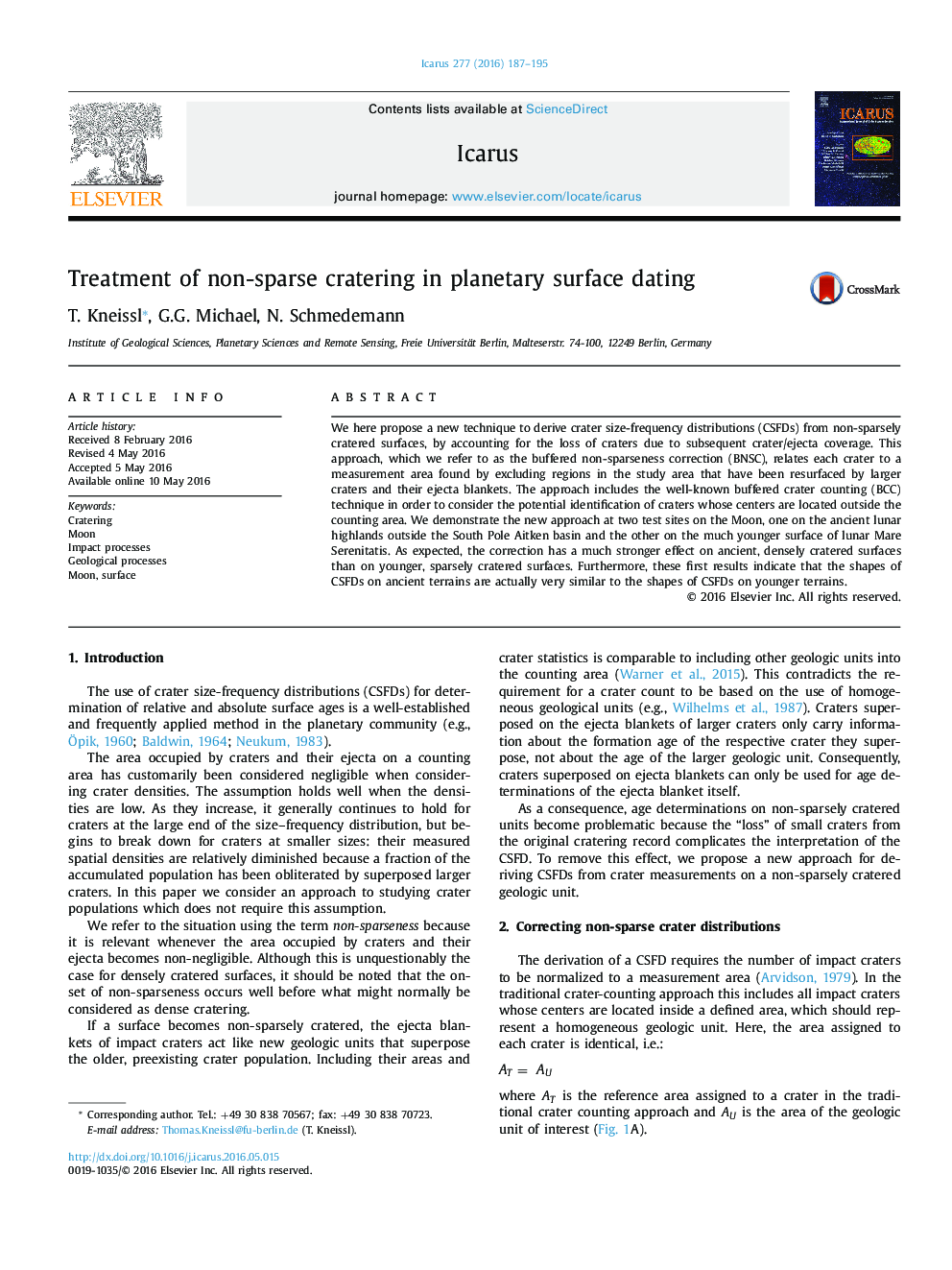| Article ID | Journal | Published Year | Pages | File Type |
|---|---|---|---|---|
| 8134911 | Icarus | 2016 | 9 Pages |
Abstract
We here propose a new technique to derive crater size-frequency distributions (CSFDs) from non-sparsely cratered surfaces, by accounting for the loss of craters due to subsequent crater/ejecta coverage. This approach, which we refer to as the buffered non-sparseness correction (BNSC), relates each crater to a measurement area found by excluding regions in the study area that have been resurfaced by larger craters and their ejecta blankets. The approach includes the well-known buffered crater counting (BCC) technique in order to consider the potential identification of craters whose centers are located outside the counting area. We demonstrate the new approach at two test sites on the Moon, one on the ancient lunar highlands outside the South Pole Aitken basin and the other on the much younger surface of lunar Mare Serenitatis. As expected, the correction has a much stronger effect on ancient, densely cratered surfaces than on younger, sparsely cratered surfaces. Furthermore, these first results indicate that the shapes of CSFDs on ancient terrains are actually very similar to the shapes of CSFDs on younger terrains.
Related Topics
Physical Sciences and Engineering
Earth and Planetary Sciences
Space and Planetary Science
Authors
T. Kneissl, G.G. Michael, N. Schmedemann,
